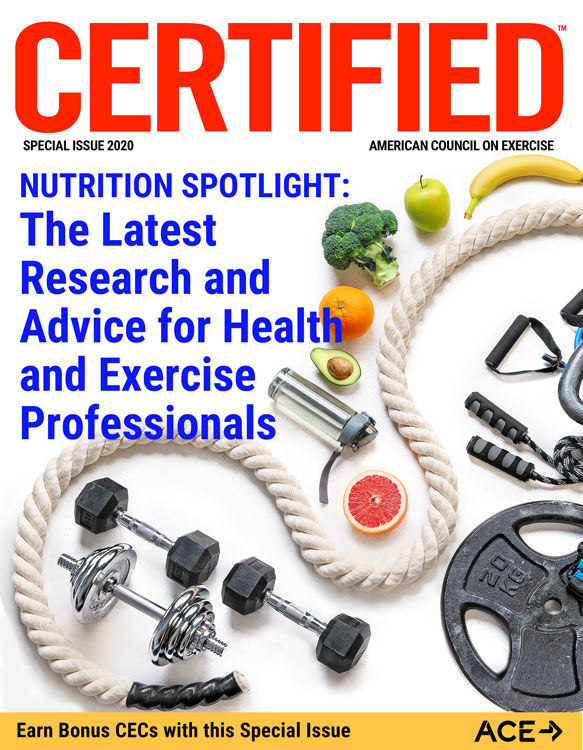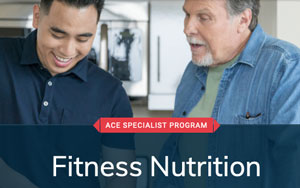
Calorie counting and macro tracking are common methods for managing caloric intake. Unfortunately, these methods can be tedious, as they require clients to weigh, measure and track every food and beverage they consume, which can be challenging. Some people, especially those new to making changes to nutrition, may struggle with understanding portion sizes or simply don’t have the time to weigh and measure everything they eat. Add in other factors such as cooking for a family, frequently eating out or travelling, and tracking intake can start to feel particularly burdensome.
As it turns out, not only is calorie counting and macro tracking difficult to stick to for a long period of time, research shows these methods aren’t particularly accurate. Self-reported caloric intake data is frequently underreported by as much as 30%, including by those individuals who are weighing and tracking foods (Poslusna et al., 2009).
That’s not to say these methods are completely without merit. Here are some guidelines for when calorie or macro counting may be helpful, as well as recommendations for who might be better off using an alternative method.
When calorie tracking may be helpful: Calorie or macro counting may be helpful for clients who are already accustomed to self-monitoring or for athletes or fitness competitors requiring a high level of dietary precision or manipulation of calories or macronutrients. It’s the most precise way of tracking intake (if weighing and measuring all food; “eyeballing” or guessing on portion sizes increases the margin of error).
Tracking calories may also help clients understand portions and serving sizes as well as recognize differences in caloric density between foods such as fruits and vegetables and highly processed foods or snacks. Tracking caloric intake may also be useful as an infrequent “audit” to help clients monitor caloric intake every few months.
Who should not count calories: Anyone with a history of an eating disorder or disordered eating practices should refrain from utilizing calorie counting unless under advisement from a health professional (e.g., registered dietitian or therapist). Recent research has shown that calorie tracking in combination with daily self-weighing is predictive of disordered eating behaviors (Romano et al., 2018). For this reason, calorie counting should not be used for clients who may be prone to disordered eating or who are highly weight focused.
Given the margin of error in calorie counting, as well as the fact that clients may not have the time or desire to track caloric intake for long periods of time, alternative methods for improving nutrition habits may be required. What follows is a review of four methods you can offer your clients to help them improve the quality of their diets without having to count calories or macros. Clients may find these strategies easier to implement, which may be beneficial in helping make long-term habit changes.
- Focus on nutrient-dense and satiating foods. High-protein foods such as lean meats, Greek yogurt and eggs, and high-fiber foods such as whole grains, fruits, vegetables and beans are generally more satiating as well as minimally processed. For example, a 2019 study found that individuals who consumed an ultra-processed diet ate an average of 500 excess calories per day compared to those who ate an unprocessed diet (Hall et al., 2019). By prioritizing protein and fiber as well as minimally processed foods at every meal, clients will begin to notice increased satiety, especially if they were previously accustomed to eating an ultra-processed diet. Feeling more satisfied after eating a meal may help reduce the temptation to overindulge.
Applied coaching: While clients who are starting with a highly processed diet could see a great improvement by eating more nutrient-dense foods, they may find it challenging to make changes for a variety of reasons. These may include not knowing how to cook or shop for healthy foods, regularly consuming fast food, or having family members or peers not accept or support their efforts.
To help clients move toward a diet filled with more nutrient-dense foods, help them identify the foods they enjoy eating and would be willing to include with their meals. Ask clients to make lists of all of the fruits and vegetables they like (noting what is in season/available in their geographic area). You can also help them identify appropriate protein sources and how to cook them, as well as review simple recipes or meal prep techniques.
Another way to ease into eating more nutrient-dense foods may be to pair more processed food with a fruit, vegetable or protein. For example, if a client is accustomed to eating sugary cereal every morning, he or she may be willing to have a banana or boiled egg on the side to increase the protein/fiber intake for the meal. Alternatively, if the client is unwilling to change a less-than-healthy breakfast habit, he or she may be willing to start by having a healthy lunch or afternoon snack. Beginning one meal at a time, or prioritizing a fruit at each meal, for example, can be a simple way to ease into incorporating more nutrient-dense foods into the diet. Utilize motivational interviewing skills to determine which meal or snack the client would be interested in starting with first, rather than assigning a meal plan or goal.
- Focus on smaller portion sizes. A 2020 study on energy intake found that eating smaller portions of main-meal foods “resulted in significant decreases in daily energy intake” (Haynes et al., 2020).
Applied coaching: An easy way to help clients better understand portions and reduce caloric intake is to encourage them to aim for hand- or palm-sized amounts to visually determine appropriate portion sizes. Typical hand portions for adults are as follows:
- Protein = palm-sized serving (approximately 3 oz or 20−30 g protein)
- Grain or starchy carbohydrate = cupped hand-sized portion or about ½ cup cooked (20−30 g carbohydrate)
- Fruits and vegetables = fist or about 1 cup serving
- Fats = about the size of a thumb (7−12 g fat)
While there is obviously still a margin of error due to “eyeballing” portions, it can take the stress out of needing to weigh or measure food, and help clients understand how much to put on the plate. Because hand measurements require less work than typical calorie or macro counting, clients may find it easier to stick to this method for the long term.
Depending on individual calorie needs, most people should consume four to eight servings of foods from each food group per day, which could be broken down into larger meals or smaller meals with snacks.
Have clients take photos of a plate with their portioned food as a way to provide accountability. Starting with one meal per day based on hand portions may be beneficial in building self-efficacy with this practice.
- Practice self-monitoring using a food journal or meal planner.
There are several ways to use a food journal, such as planning a day or week ahead of time or utilizing the journal like a diary at the end of the day (or after each meal/snack). Tracking meals throughout the day or at the end of the day can help clients notice patterns in their own nutrition or notice where they may have room for improvement. For example, when recording the day’s intake, a client may notice she always reaches for sweets after lunch; this, in turn, may encourage her to make different choices moving forward or to choose chocolate only a few times per week rather than every day. Likewise, planning meals ahead of time can take the stress or guesswork out of “choosing” a meal or snack on the spot because the decision has already been made.
Applied coaching: Daily monitoring can be recorded in a variety of ways, including pen and paper, with an app, by taking photos, or utilizing an electronic note or document to record meals and snacks. It may also be helpful to encourage clients to note how they feel after specific meals or if there were any emotions related to the foods they were choosing in an effort to self-identify any emotional eating that may occur.
- Use intuitive or mindful eating practices. These techniques may help clients learn to self-regulate their intake and avoid the need to rely on “rules” or restrictions for eating, which can make adherence and improvement greater in the long run. It’s important to note that intuitive eating practices are ineffective when consuming a diet that consists primarily of highly processed foods, as these foods are not satiating.
Applied coaching: Here are a few strategies to offer your clients to help them begin to eat intuitively:
- Eat slowly. Most busy people have a habit of eating quickly. Slowing down makes it easier to notice fullness cues.
- Stop when satisfied or around 80% full. Many people have a habit of eating until they are full or “stuffed,” meaning they have probably consumed more than their bodies needed. Additionally, increasing fiber intake can also help with satiety.
- Turn off distractions. Snacking or having meals while multitasking or watching television, working on a computer, or scrolling the phone or tablet can make it easy to overeat and not feel satisfied when the food is gone. Turning off distractions can help clients be more mindful and more easily notice when they are feeling satisfied, which is much harder to gauge when eating while watching a screen.
Remember, some methods may work better than others depending on your client’s personality type, how new he or she is to understanding nutritional principles, as well as the social support (or lack thereof) he or she receives from friends or family. Some clients may even prefer monitoring the data of calorie or macro tracking. As coaches, it’s your job to help figure out the best method for the client’s lifestyle and personality, rather than recommend the same method to each person. Some individual factors to consider include the amount of time the client has to dedicate to planning or tracking meals, prior experience with making nutritional changes and control/perceived control over food intake (e.g., frequent dining out or travel).
Finally, encourage clients to look at their nutritional changes as an experiment or opportunity for improvement rather than an exact science with an expected outcome or guarantee. In contrast to a rigid or prescribed approach, taking a collaborative and investigative approach can make behavior change easier to navigate and result in better client outcomes in the long run.
References
Hall, K.D. et al. (2019). Ultra-processed diets cause excess calorie intake and weight gain: An inpatient randomized controlled trial of ad libitum food intake. Cell Metabolism, 30, 1, 226.
Haynes, A. et al. (2020). Reductions to main meal portion sizes reduce daily energy intake regardless of perceived normality of portion size: A 5-day cross-over laboratory experiment. International Journal of Behavioral Nutrition and Physical Activity, 17, 1.
Poslusna, K. et al. (2009). Misreporting of energy and micronutrient intake estimated by food records and 24-hour recalls, control and adjustment methods in practice. British Journal of Nutrition, 101, S2.
Romano, K.A. et al. (2018). Helpful or harmful? The comparative value of self-weighing and calorie counting versus intuitive eating on the eating disorder symptomology of college students. Eating and Weight Disorders - Studies on Anorexia, Bulimia and Obesity, 23, 6, 841–848.





 by
by 





